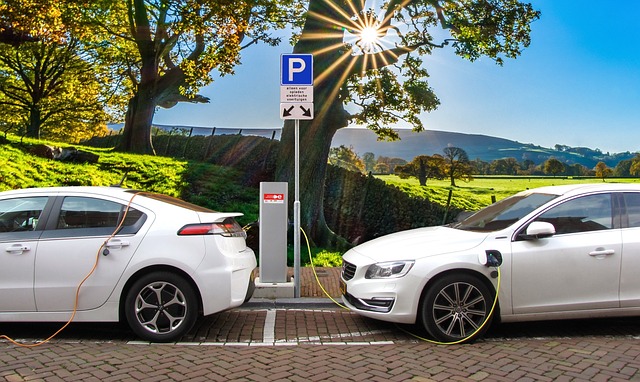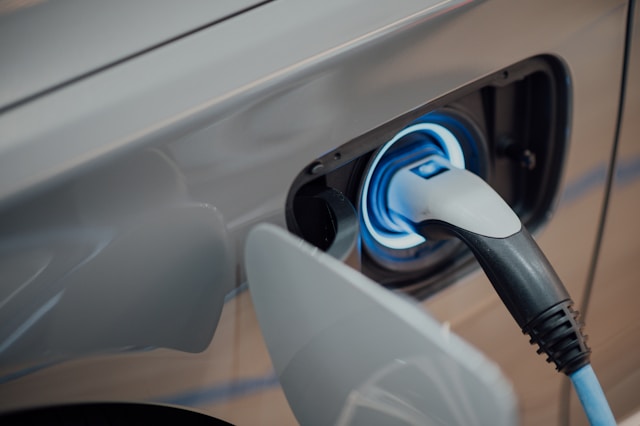
Electric vehicles (EVs) are all the rage these days, and for good reason.
One of the biggest reasons people jump on the EV bandwagon is that they’re way better for the environment than traditional gas-guzzlers.
Think about it – traffic jams and car pollution are major headaches in busy urban areas. But with more electric vehicles on the road, we see fewer emissions and less noise pollution, making a smoother, more pleasant commute.

Let’s learn more about electric vehicles and their impact on urban mobility.
What are Electronic Vehicles (EVs)?
Electric vehicles, or EVs for short, are cars, trucks, or other vehicles that are powered by electricity instead of traditional gasoline or diesel fuel. Instead of an internal combustion engine like you’d find in a typical car, EVs have an electric motor that runs on electricity stored in a battery and charges on stations like electric bus charging stations.
Basically, they’re like giant, high-tech versions of the remote-controlled cars you might have played with as a kid, but way cooler and way more efficient.
Since they don’t rely on fossil fuels, they produce zero tailpipe emissions, which makes them much better for the environment.
3 Ways Electric Vehicles Impact Urban Mobility
Here are four ways electric vehicles (EVs) are shaking up urban mobility:
1. Reduced Emissions
Electric vehicles are crucial in reducing harmful emissions in urban areas, benefiting the environment and public health. Here’s how they do it:
- Zero Tailpipe Emissions: Unlike traditional gasoline or diesel-powered vehicles that emit pollutants like carbon dioxide (CO2), nitrogen oxides (NOx), and particulate matter (PM) from their tailpipes, EVs produce zero tailpipe emissions.
- Cleaner Energy Sources: While EVs themselves produce no emissions during operation, the environmental impact of charging them depends on the source of electricity. However, as more renewable energy sources like solar and wind power are integrated into the grid, the carbon footprint of charging EVs continues to decrease.
- Energy Efficiency: Electric motors are much more efficient at converting energy from the battery into motion than traditional engines’ combustion processes, which results in less wasted energy and lower overall emissions per mile traveled.
2. Quiter Streets
Traditional gasoline and diesel vehicles can be pretty noisy, especially when driving or idling in traffic. However, EVs run almost silently with their electric motors, significantly reducing urban noise pollution.
Constant exposure to traffic noise can negatively affect mental health and well-being, leading to stress, annoyance, and even sleep disturbances. Introducing more electric vehicles into city streets can create quieter and more tranquil urban environments, improving the quality of life for everyone who lives, works, and plays there.
3. Improved Traffic Flow
Electric vehicles are changing the way we move through urban areas, helping to ease congestion and keep traffic moving:
- Reduced Congestion: With their smaller size and nimble handling, EVs can navigate crowded city streets more easily than larger, traditional vehicles.
- Dynamic Routing: Some EVs have advanced navigation systems that optimize routes based on real-time traffic data and charging station locations. By guiding drivers away from congested areas and towards less crowded routes, these systems help to distribute traffic more evenly and keep traffic flowing smoothly.
- Quick Acceleration: Electric motors deliver instant torque, allowing EVs to accelerate quickly from a stop, which means less time spent idling at traffic lights or in stop-and-go traffic, helping to improve the overall traffic flow on city streets.
Conclusion
Electronic vehicles are changing urban mobility by reducing emissions, quieting streets, and improving traffic flow.
As more people make the switch, cities are becoming cleaner, quieter, and more efficient places to live and travel. Electric vehicles drive us towards a greener, more sustainable future for urban transportation.
- SEO Powered Content & PR Distribution. Get Amplified Today.
- PlatoData.Network Vertical Generative Ai. Empower Yourself. Access Here.
- PlatoAiStream. Web3 Intelligence. Knowledge Amplified. Access Here.
- PlatoESG. Carbon, CleanTech, Energy, Environment, Solar, Waste Management. Access Here.
- PlatoHealth. Biotech and Clinical Trials Intelligence. Access Here.
- Source: https://www.theenvironmentalblog.org/2024/06/the-impact-of-electric-vehicles-on-urban-mobility/
